Tastes Like Summer: Grilled Shrimp Tacos with Peach Salsa
- Details
- Written by: Joanne Wallenstein
- Category: Health
 This article was submitted by Kimberly Greenburg, MS, Nutritionist with White Plains Hospital
This article was submitted by Kimberly Greenburg, MS, Nutritionist with White Plains Hospital
Summer is the perfect time to pack your plate with fresh fruits and vegetables that are both healthy and delicious. Shops and farmers’ markets overflow with sweet-tart cherries, honeyed melons, juicy peaches, and ready-for-the-grill vegetables like eggplants and peppers.
“When you’re eating foods in-season, they’re at their peak nutrient content,” says Kimberly Greenburg, a Registered Dietitian and Certified Diabetes Care and Education Specialist with White Plains Hospital Physician Associates. “I’m a big fan of joining a CSA [Community Supported Agriculture] program. It’s basically buying a share of a farm’s crops for the season.”
Local CSAs run throughout the summer season, with members signing up for weekly drops of freshly  harvested fruits and vegetables. Unlike supermarkets, where shoppers pick and choose, CSA members receive boxes with a selection of what’s at peak ripeness, making them a great choice for flexible cooks who want to diversify their diets. “You’re introducing yourself to new vitamins, nutrients, and flavors,” Greenburg says. You can find a CSA near you at hudsonvalleycsa.org.
harvested fruits and vegetables. Unlike supermarkets, where shoppers pick and choose, CSA members receive boxes with a selection of what’s at peak ripeness, making them a great choice for flexible cooks who want to diversify their diets. “You’re introducing yourself to new vitamins, nutrients, and flavors,” Greenburg says. You can find a CSA near you at hudsonvalleycsa.org.
For those who don’t want to commit to a farm share, she recommends shopping local farmers’ markets and looking for displays highlighting local produce at supermarkets. “New York grows a good amount of local produce,” Greenburg adds. No matter where you get your groceries, shopping in-season options will take your summer meals to the next level.
To find what produce is in season, visit seasonalfoodguide.org.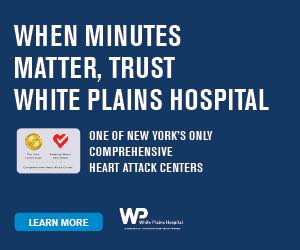 Healthy Eats:
Healthy Eats:
Grilled Shrimp Tacos with Peach Salsa
Greenburg fires up the grill for these tacos, featuring lean protein and bright salsa made with sweet summer peaches.
Recipe adapted from Skinny Taste.
Ingredients
• 8 long wooden or metal skewers
• ½ of a medium red onion, thinly sliced
• Juice of 2 limes, divided, plus extra lime wedges for serving
• 1 large peach, diced
• ½ of a small avocado, diced
• 2 Tbsp finely chopped fresh cilantro
• ¼ tsp chili powder
• 1½ lbs shelled and deveined jumbo raw shrimp
• Olive oil spray
• 1 tsp Tajin seasoning
• 1/8 tsp cayenne pepper
• 8 6-inch corn tortillas
• Kosher salt
Cooking Instructions
1. If using wooden skewers, soak in water for at least 20 minutes to prevent them from burning. (You can skip the skewers and use a grill basket or an indoor grill pan.)
2. In a small bowl, combine the onion, juice from 1½ limes, and a large pinch of salt. Let the mixture pickle, stirring occasionally, while you prepare the other ingredients.
3. In another small bowl, combine the peach, avocado, cilantro, chili powder, and remaining lime juice. Season generously with salt, toss to combine, and set aside.
4. Preheat the grill to medium-high heat.
5. Pat the shrimp dry and spray with oil. Season with Tajin, ¼ teaspoon kosher salt, and cayenne pepper. Thread the shrimp onto double skewers, leaving enough room at the end to hold and flip them.
6. Grill for 2 to 3 minutes per side, until the shrimp are pink and firm. Transfer shrimp to a plate to cool while you lightly char the tortillas on the grill, about 1 minute per side.
7. To assemble, remove the shrimp from the skewers and distribute equally among the tortillas. Top with a heaping spoonful of salsa and a few pickled onions. Serve with extra lime wedges and pickled onions on the side.
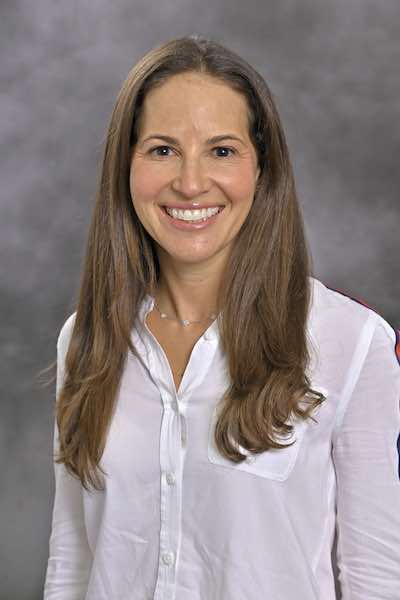 Kimberly Greenburg is a Registered Dietitian-Nutritionist and Certified Diabetes Care and Education Specialist at White Plains Hospital Physician Associates. To make an appointment, call 914-683-1555.
Kimberly Greenburg is a Registered Dietitian-Nutritionist and Certified Diabetes Care and Education Specialist at White Plains Hospital Physician Associates. To make an appointment, call 914-683-1555.
Health Matters
The original version of this article was published in Health Matters a White Plains Hospital publication.
The Low Carb vs. Low Fat Diet Debate: Is Either One Right for You?
- Details
- Written by: Elizabeth DeRobertis
- Category: Health
 Submitted by Elizabeth DeRobertis, Registered Dietitian at White Plains Hospital
Submitted by Elizabeth DeRobertis, Registered Dietitian at White Plains Hospital
When it comes to finding the right diet to help lose weight, many people tend to fall into one of two categories: following a low-carbohydrate diet plan or going to the low-fat route.
But which approach is right for you? Given that neither one has been conclusively proven to be the best way to shed pounds, the answer can be a little complicated.
A low-carb diet can work for weight loss because:
• Reducing carbohydrates helps to reduce levels of insulin, the hormone that signals your body to store fat.
• By reducing or eliminating carb-heavy foods (including bread, rice, pasta, cookies, chips, and candy), you are stabilizing blood sugar and insulin levels, which can help reduce hunger, leading to eating less and losing weight.
However, many of the popular low-carb diets promote higher intakes of fat — specifically, sources of saturated fat like butter, red meat, and cheese. As a result, those following this approach may develop high cholesterol levels. If you adopt a low-carb diet, consider one that includes lean proteins and healthy fats.
A low-fat diet can work for weight loss because:
• When you are eating less fat, you are often eating less high-calorie fats like red meat, cheese, butter, full-fat dairy, nuts, chips, cakes and cookies.
• When done right — with healthy fats like olive oil, avocado, and nuts in moderation — a low-fat diet can support heart health.
We should all have some fat in our diet, but it should be the right kind and in the right portion. Fat has 9 calories per gram – carbohydrates and protein have 4 calories per gram – so overeating fat, even the healthy kind, can get in the way of losing weight.
My recommendation: pull from both approaches. What I typically recommend for weight loss – as well as cholesterol reduction, diabetes prevention/management, and heart health –– is:
Calorie control. By reducing caloric intake, you will likely lose weight. But do it in a way that is healthy and sustainable for the long term, by spending calories primarily on foods that are “lean and green,” meaning lots of lean proteins and vegetables.
Include portion-controlled, “careful” carbs in your day; such carbs have fiber that add a nutritional benefit. A strict low-carb diet would eliminate fruit, yet berries are very high in antioxidants and add a great nutritional advantage to our day. Thin-sliced whole-grain bread can also reduce your carb and calorie intake; using it for sandwiches can be filling physically and psychologically.
Add healthy fats in moderation. A 100-calorie size bag of almonds or pistachios will be more satisfying than a 100-calorie bag of pretzels by holding hunger at bay for a longer period, while providing monounsaturated fat and keeping insulin levels consistent.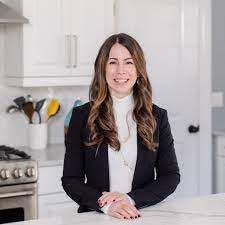 Strategically choosing careful carbs and healthy fats will create a plan that does not feel like a diet. The goal is to build a sustainable and healthy way of living that supports weight management without feeling restrictive.
Strategically choosing careful carbs and healthy fats will create a plan that does not feel like a diet. The goal is to build a sustainable and healthy way of living that supports weight management without feeling restrictive.
To better understand how you can create a diet for yourself, make an appointment with a nutritionist who can advise a weight-loss plan that works best for you.
Elizabeth DeRobertis is a Registered Dietitian with the Scarsdale Medical Group. To make an appointment, call 914-723-8100.
Health Matters
The original version of this article was published in Health Matters, a White Plains Hospital publication.
Having a Healthy Pregnancy at Age 35-Plus
- Details
- Written by: Joanne Wallenstein
- Category: Health
 Submitted by Dr. Karimah Smith, Obstetrics & Gynecology at White Plains Hospital
Submitted by Dr. Karimah Smith, Obstetrics & Gynecology at White Plains Hospital
The number of women in the U.S. giving birth at age 35 and older has steadily been growing. Between 1990 and 2023, birth rates increased 71% among women ages 35-39, 127% among women ages 40-44 and 127% in women 45 and older, according to the CDC. Researchers cite several reasons for this increase, including changing social expectations and values; prioritizing education and career earlier in life; waiting longer to get married; and improvements in reproductive technologies. No matter the reason, there are several things to keep in mind when considering pregnancy if you are 35 or older.
The Pregnancy Journey
First, as women age, our fertility is reduced – a process that begins in the early 30s. By mid-40s, most women have difficulty conceiving naturally, and the average woman begins menopause at 51.
While there are always inherent risks to getting pregnant, older women may face more complications. These include difficulty in getting pregnant, as well as an increased chance of multiple births due to the body’s releasing more than one egg as it goes through hormonal changes. The risk of multiple births also rises if you are undergoing in vitro fertilization (IVF) treatments – one of the many options for couples having difficulty conceiving.
Once pregnant, your chance of developing gestational diabetes is also more common. Your physician will check you for gestational diabetes, but remaining physically active can be very important. Following as much of your regular workout routine can also keep you feeling calm and comfortable and may help during labor and recovery.
Risk Factors & Recommendations
While women over the age of 35 often have great outcomes and healthy babies, there are some other risk factors to keep in mind. As we age, there is the potential for:
• A higher risk of pregnancy loss, often due to pre-existing medical conditions or the baby’s chromosomal conditions. It is important to talk with your provider about genetic screenings and the optimal time for getting screened
• A greater risk of premature birth
• An increased risk of a baby born much larger or much smaller than average
• A higher chance of a C-section delivery
I recommend the following measures to make your pregnancy and birth as smooth as possible:
• Take prenatal vitamins with folic acid and docosahexaenoic acid (DHA), an omega-3 fatty acid that can be vital for a fetus’ and infant’s brain and eye development
• Keep up with your appointments, as you will be monitored for signs of preeclampsia or gestational diabetes
• After delivery, try to be up and mobile as soon as you can; this helps with your recovery either from vaginal or C-section delivery
Having a baby at any age is one of life’s great joys, but being aware of the risk factors involved – especially if you are 35 or older – is essential to ensuring you are prepared for what is ahead. Your physician is always your greatest resource, so be sure to let us know your plans so we can help you every step of the way.
Learn more about White Plains Hospital's Maternity services.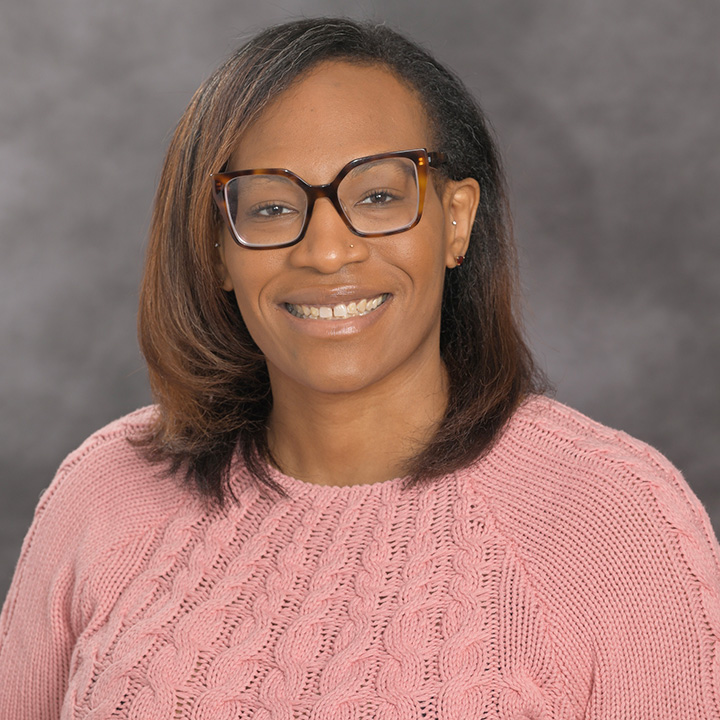
Dr. Karimah Smith is a board-certified obstetrics and gynecology physician at White Plains Hospital Physician Associates in White Plains. To make an appointment, call 914-328-8444.
Health Matters
The original version of this article was published in Health Matters, a White Plains Hospital publication.
Recreation Department Asks You to Complete Survey on Youth Sports Programs
- Details
- Written by: Joanne Wallenstein
- Category: Health
 The Scarsdale Recreatio Department is asking for your input to a survey on youth sports program. Please find the link to complete the survey below:
The Scarsdale Recreatio Department is asking for your input to a survey on youth sports program. Please find the link to complete the survey below:
Dear Scarsdale Families,
Scarsdale Recreation is conducting a short survey (estimated 5–10 minutes) to gather community input on youth sports programs. It’s been nearly 20 years since our last comprehensive review, and we want to ensure our offerings continue to meet the needs of today’s families.
Your feedback will help us evaluate league structure, coaching models, and the balance between developmental and competitive play, across all ages and sports.
Please take a few minutes to share your perspective. Your input will help shape the future of youth sports in Scarsdale.
Here is the link to the Scarsdale Youth Sports Community Survey.
Thank you,
Scarsdale Recreation Department
Weight Watch
- Details
- Written by: Dr. Angel Rodriguez
- Category: Health
 (The following was submitted by Dr. Angel Rodriguez, Primary Care Physician at White Plains Hospital.)
(The following was submitted by Dr. Angel Rodriguez, Primary Care Physician at White Plains Hospital.)
When the World Health Organization recognized obesity as a global epidemic in 1997, less than 20% of Americans were considered obese, with a body mass index (BMI) greater than or equal to 30.
Less than three decades later, the numbers are staggering. Obesity rates in the United States have doubled to 40% according to a 2021-2023 report by the Centers for Disease Control. As rates continue to rise, it’s predicted more than 250 million Americans will be obese or overweight by 2050.
“Obesity is one of the most common conditions I see in patients,” says Dr. Angel Rodriguez, Medical Director of Primary Care at White Plains Hospital Physician Associates. “Over the past several decades, we’ve seen a shift toward high-calorie diets comprised of processed foods that are full of salt, sugar, fats, and artificial colorings. They are designed to entice people to eat more, but they’re not very healthy and lack nutrients.”
Though Westchester’s obesity rate sits well below the national average at 24% of the population, residents still report overindulging in ultra-processed foods. In the most recent Westchester County Community Health Assessment, 20% of adults self-reported consuming one or more sugary drink daily and 23% said they ate less than one fruit or vegetable daily.
Avoiding processed foods and exercising for at least 150 minutes per week can help achieve a healthy BMI.
Increasingly sedentary lifestyles also contribute to weight gain—a trend that’s been exacerbated in recent years by increased screen time and work-from-home culture. “COVID brought that out more than anything. Now we sit in front of the computer eating and talking,” Dr. Rodriguez says. “I can relate. As with everyone else, I gained weight during the pandemic and am working hard to get back to a healthy weight.”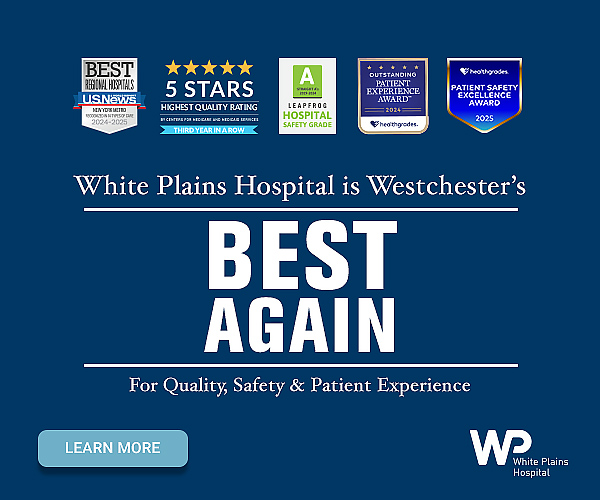
Shedding excess pounds has a positive impact on heart health. “Carrying extra weight is like carrying a backpack full of rocks,” Dr. Rodriguez says. “Your heart has to work harder and the extra weight causes added stress in the whole body, including on the joints and liver as well.” Obesity is also tied to increased incidence of other chronic conditions, including hypertension, high cholesterol, insulin resistance, and diabetes—all risk factors for heart disease—as well as inflammation and joint pain.
Dr. Rodriguez recommends this commonly prescribed regimen for reaching a healthy BMI:
• Follow a healthy diet and swap those processed foods for fruits, vegetables, whole grains, lean proteins, and healthy fats.
• Aim for at least 150 minutes of exercise per week.
• Eat slower to help with portion control.
• And, drink lots of water — it’s good for you and filling.
Before starting an exercise regimen, patients should visit their primary care physician for a physical—a step Dr. Rodriguez notes is often overlooked. A comprehensive exam confirms the heart is healthy enough for cardio and can identify other factors linked to weight gain, like genetics, hypothyroidism, and in young women, polycystic ovary syndrome. “Most patients who are obese are relatively sedentary,” he notes. “You want to have a sense of what their heart can handle before they go run on a treadmill.”
Physicians can also advise on injectable weight-loss (GLP-1 and GIP receptor agonists) medications for appropriate patients to help with weight loss and lower the risk of heart attack. “You still need to eat right and exercise, but the good thing is that these meds are working for the right patients,” says Dr. Rodriguez.
To combat this growing epidemic, small, sustainable changes to diet and lifestyle can make a significant impact over time. With the right support and 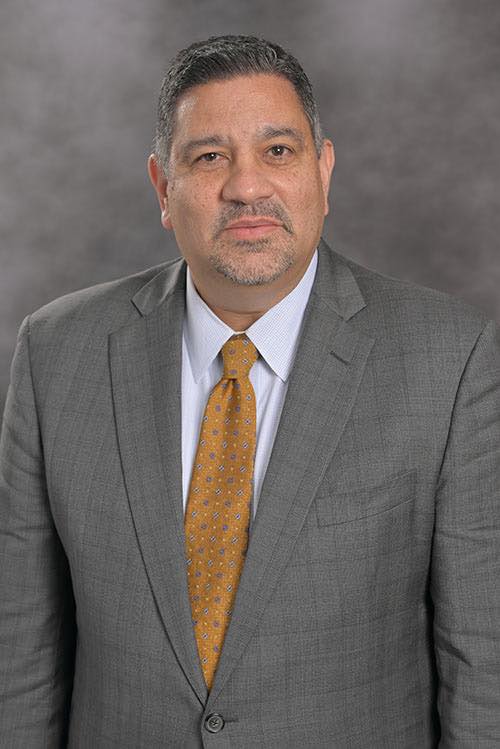 resources, maintaining a healthy weight and reducing heart-disease risk is within reach, Dr. Rodriguez notes.
resources, maintaining a healthy weight and reducing heart-disease risk is within reach, Dr. Rodriguez notes.
Dr. Angel Rodriguez is the Medical Director of Primary Care at White Plains Hospital Physician Associates. To make an appointment with Dr. Rodriguez at WPHPA of Pleasantville, located at 180 Marble Avenue, call 914-849-4100.
Health Matters
The original version of this article was published in Health Matters, a White Plains Hospital publication.









